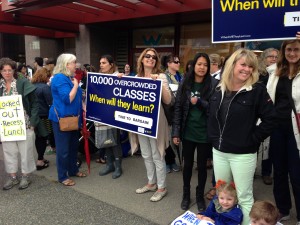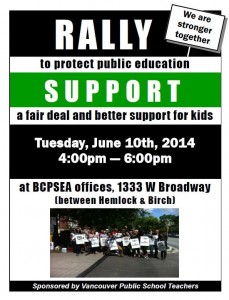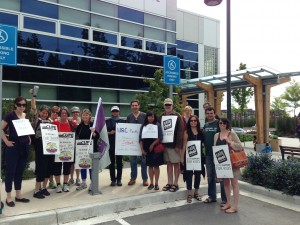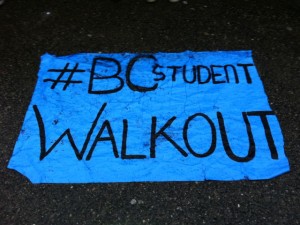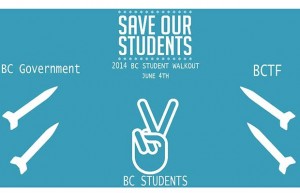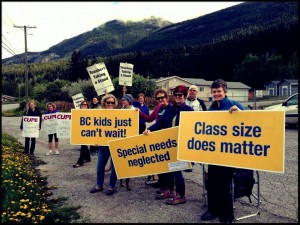With ICES
-
Recent Posts
- Critical Education Special Issue Call for Papers — THE GREAT BEYOND: SURPASSING HISTORICAL DAMAGE AND PIVOTING TOWARDS PROTECTING BLACK BOYS
- Critical Education Special Issue CFP: THE GREAT BEYOND: SURPASSING HISTORICAL DAMAGE AND PIVOTING TOWARDS PROTECTING BLACK BOYS
- Workplace welcomes new Co-Editor Rhiannon M. Maton
- New issue of Critical Education, Vol. 16, No. 4 (2025)
- New issue of Critical Education published
Recent Comments
- iit coaching in noida sector 62 on Working toward tuition free post-secondary education in BC and Canada
- Ahlam N Abdel Rahman on Workplace: A Journal for Academic Labor
- OJEDOKUN OLALEKAN ELIJAH on E. Wayne Ross
- E Wayne Ross on Critical Education
- Dorothy Vaandering on Critical Education
ICES Calendar
Archives
Categories
Meta
Blogroll
Trends
Academic freedom Adjuncts Administration BC education BC Liberals BCTF British Columbia Budgets & Funding call for manuscripts CFP CFPs conferences Contracts Critical Education critical pedagogy critical theories curriculum studies education policy education reform Equity Ethics Faculty Free speech Government journals K-12 issues Labor Legal issues neoliberalism Protests publications Research social studies education Strikes Strikes & Labor Disputes Student Movement Students talks teacher education Teachers Testing UBC unions Working conditions Workplace JournalAuthors
Monthly Archives: June 2014
Private education funding is undemocratic
Public funding for private schools is at odds with creating a more equitable, just, and democratic society.
It is a policy that almost always privileges families with more disposable income over the less wealthy and poor and often privileges religious education over secular education.
Moreover, public funding of private schools supports a two-tiered system of education that allows some schools to cherry pick who attends and undermines the concepts of the public good and community in favor of individual gain.
Public school budget cuts result in closed libraries, reduced special education services, and increased class size, while private schools are publicly subsidized to provide the advantaged with more benefits. These include such as smaller class sizes, which allow teachers to be more responsive to student needs and customize learning activities and to provide private school students with enriched curricula in art, sports, and music programs.
For the first one hundred years of its history there was no public funding of private or religious schools in British Columbia. The Social Credit government introduced public funding of private education in 1977 and only then did enrolment in private schools begin to increase, taking a larger share of the provincial education budget.
Since the BC Liberals ascended to power, British Columbians have been subjected to a steady stream of ideologically driven public policy decisions that shift responsibility for providing and financing public services from the public to the private domain. As with other public assets, their aim is to privatize the commonwealth of the province.
Public funding of private schools is a form of privatization consistent with fundamental ideological positions of the BC Liberals and the corporate media in BC, which include reducing taxes on the wealthy and corporations and cutting public spending for social services.
Privatizing public enterprises, goods, and services is usually done in the name of increased efficiency, but mainly has the effect of concentrating wealth in fewer hands (the gap between the wealthiest and the majority of BC families has grown dramatically over the past 30 plus years) and making the public pay more for its needs (see, for example, BC Ferries).
Not unlike academy schools in England or charter schools in the US, public funding of private schools in BC is privatization through the back door.
Elite private schools are subsidized by the public, while public schools are told to look to the market—recruiting tuition paying international students, setting up school district business companies, or opening their doors to corporate programs—or to parent fund raising, to solve a budget crisis imposed by government’s distorted priorities.
In a recent editorial, The Province charged critics of public funding for private schools with being “long on ideology and short on intelligence,” but it seems this paper’s own market ideology has blinded them to some key facts.
The fundamental idea of public funding for private schools is based on the false premise that private schools do a better job. In reality, public school students outperform private school students.
A recent study of first-year physics students at UBC found that those who had graduated from public schools in Metro Vancouver outperformed their private schools peers.
This finding is reiterated in a study just published by the University of Chicago Press, which concludes public schools achieve the same or better mathematics results as private schools with demographically similar students.
In 2006, the Educational Testing Service reached similar conclusions, finding that US public school students outpaced private school students in both reading and math.
Private school enrolment is soaring because it is encouraged by public policies that divert public money to support private interests and by ideologies that promote individualism and private gain over community and shared interests.
[Edited version published as op-ed column, “Private education funding is undemocratic,” in Times Colonist, June 28, 2014: http://www.timescolonist.com/opinion/op-ed/comment-private-education-funding-is-undemocratic-1.1185002]
[Shorten version published as letter, “Education: Privatization through the back door: Responsibility for public services shifting to private domain,” in Vancouver Sun, June 21, 2014:
http://www.vancouversun.com/business/Saturday+June+Education+Privatization+through+back+door/9960264/story.html]
BC Labour leaders statement in solidarity w #BCed teachers #BCTF #bcpoli #yteubc #criticaled
B.C. Federation of Labour Statement of Solidarity with Teachers
17 June 2014
As leaders of British Columbia’s Labour Movement we speak with one voice today in solidarity with the 40,000 teachers in the province who are standing up for the rights of children to a quality public education by demanding a fair collective agreement.
It is becoming more and more apparent that, despite statements to the contrary by Premier Christy Clark, there is little desire by the B.C. Liberal government to bargain in good faith and end this dispute for the good of all.
The B.C. Teachers’ Federation has shown a willingness to find a path forward, putting forth significant changes that would have brought teachers and the employer closer to an agreement. But the government refused to even discuss them, and chose to move backwards instead of forwards.
Teachers want to stay in the classroom but they know how important it is to hold strong against the government’s assault on our public education system. Their fight is bigger than one union – they are fighting for the rights of all workers to be treated with dignity and for all children to have a solid start in life.
Christy Clark and the B.C. Liberals need to get the clear message from British Columbians that it is time for the government to respect the work of our teachers and the two court decisions, and negotiate a settlement in good faith. There is no need to let this dispute continue through the summer and into the fall. The time to settle is now.
We know that workers and parents across the province support teachers – they understand and respect the important role they play in our communities.
It is now time for all of us to take action. Demonstrations of solidarity with teachers are more important now than ever.
As labour leaders and parents we are calling on our members, and all British Columbians, to bolster the picket lines to ensure teachers know they are not standing alone, and the government knows we are a united movement.
Such acts of solidarity over the last two weeks have made a difference. Other unions, including 25,000 CUPE members, have been active on the picket lines – and as the teachers move into a full strike, we all need to play our part.
Write the Premier, the Education Minister and your local MLA. Tell Christy Clark to stop wasting taxpayers’ money on fighting the courts, and start investing in public education so that our kids have the best chance for success.
And join the rallies being hosted by the B.C. Federation of Labour and the B.C. Teachers’ Federation. A strong showing sends a strong message – both to the teachers of the province who need your support, and to the government who needs to hear your frustration.
As working people, public education has never been more important for our young people. Their success in finding meaningful work and in being active members of their communities is tied directly to a fully-funded public education system where all educational staff are respected.
We are all responsible for protecting that system now.
In solidarity,
Val Avery, HSA
David Black, COPE 378
Lynn Bueckert, BCGEU
Brian Cochrane, IUOE
Laird Cronk, IBEW
Robert Demand, UNITE HERE!
Victor Elkins, HEU
Mark Gordienko, ILWU
Mark Hancock, CUPE BC
Amber Hockin, CLC
Steve Hunt, USW
Jim Iker, BCTF
Bob Jackson, PSAC
Dusty Kelly, IATSE
Irene Lanzinger, BCFED
Ivan Limpright, UFCW
Lee Loftus, BC Building Trades
Gavin McGarrigle, Unifor
Cindy Oliver, FPSE
Bonnie Pearson, HEU
Karen Ranalletta, CUPE BC
Jim Sinclair, BCFED
Stephanie R. Smith, BCGEU
Joie Warnock, Unifor
Posted in BC Education, Disputes, Government, K-12 issues, Organizing, Rallies, Strikes & Labor, Students, Teachers, Unions
Tagged BC education, BCTF, Government, K-12 issues, Students, Teachers, unions, Working conditions
Rally for public #BCed support teachers June 19 6pm #bcpoli #ubc #yteubc
All Together for Public Education
Rally for Better Support for Kids | Rally to Support BC Teachers
Thursday, June 19, 2014 – 6:00 p.m.
Canada Place, Vancouver
The Officers of the BC Federation of Labour held a conference call today and pledged full support for the BC Teachers Federation who are now engaged in a full strike province-wide for a fair collective agreement.
A mass rally for teachers, activists, parents, and union members is this Thursday, June 19, 2014 at Canada Place in downtown Vancouver, starting at 6 p.m. (Music and creative poster making at about 5)
Posted in BC Education, Free speech, K-12 issues, Organizing, Protests, Rallies, Students, Teachers, Unions
Tagged BC education, BCTF, Government, K-12 issues, Students, Teachers, unions, Working conditions
Petition to support #BCed teachers #BCTF delivered @ChristyClarkBC #bcpoli #yteubc
Today, we delivered a petition signed by 477 faculty members, librarians, administrators, students, and staff in post-secondary institutions across BC to Premier Christy Clark and Minister Peter Fassbender.
Thanks you to all who signed! Comments made by signatories are extremely insightful and emphasize the widespread support of the teachers / BCTF. We will leave the petition open to reach another goal of 600 signatures.
SIGN THE PETITION TO SUPPORT BC TEACHERS / BCTF
Dear Premier Clark and Minister Fassbender,
We the undersigned, faculty members, librarians, administrators, students, and staff in post-secondary institutions across British Columbia, encourage you to increase your support of public education by recognizing the value of our teachers. We encourage you to demonstrate this recognition by bargaining with the BCTF with an open mind to quickly meeting the teachers’ very fair proposals. The BC Public School Employers’ Association’s (BCPSEA) retaliatory lockout further eroded the teachers’ right to bargain and threatened fair labour practices across the BC public sector. BCTF President Iker argues “It’s time for Premier Christy Clark to provide the employer with new funding that will help bring the two sides closer together on class size, composition, staffing levels for specialist teachers, and wages.” We agree.
Please invest in education and labour by resolving this dispute at the bargaining table rather than through retaliatory lockouts and unrealistic proposals. Please meet the teachers’ most recent proposal for common ground. The teachers, who are the BCTF, and all public sector employees through their unions, deserve a fair, timely process of reaching a collective agreement. Thank you.
Posted in BC Education, Disputes, Faculty, Government, K-12 issues, Organizing, Students, Teachers, Unions
Tagged BC education, BCTF, Government, K-12 issues, Strikes & Labor Disputes, Students, Teachers, unions
Petition to support #BCED teachers #CapilanoU #EmilyCarrU #RoyalRoads #SFU #TWU #UBC #UFV #UNBC #VIU #UVic
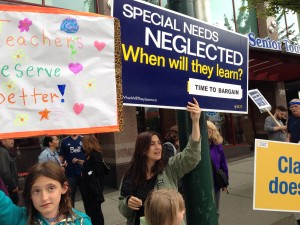 Students, teachers and supporters at BCTF VESTA rally, June 10, 2014
Students, teachers and supporters at BCTF VESTA rally, June 10, 2014
SIGN THE PETITION TO SUPPORT BC TEACHERS / BCTF
BC Premier Christy Clark and Minister Peter Fassbender,
We the undersigned, faculty members, librarians, administrators, students, and staff in post-secondary institutions across British Columbia, encourage you to increase your support of public education by recognizing the value of our teachers. We encourage you to demonstrate this recognition by bargaining with the BCTF with an open mind to meeting the teachers’ very fair proposals. This includes de-escalation by backing down on the BC Public School Employers’ Association’s (BCPSEA) retaliatory lockout, which further erodes the teachers’ right to bargain and threatens fair labour practices across the BC public sector. BCTF President Iker argues “It’s time for Premier Christy Clark to provide the employer with new funding that will help bring the two sides closer together on class size, composition, staffing levels for specialist teachers, and wages.” We agree.
Please invest in education and labour by resolving this dispute at the bargaining table rather than through retaliatory lockouts. The teachers, who are the BCTF, and all public sector employees through their unions, deserve a fair process of reaching a collective agreement. Thank you.
Posted in BC Education, Government, K-12 issues, Organizing, Protests, Strikes & Labor, Students, Teachers, Unions
Tagged BC education, BCTF, Government, K-12 issues, Students, Teachers, unions
Rally to support #BCed teachers #ubc #sfu #ucapilano #yteubc #bcpoli
Rally today (10 June) to support BC teachers @ 4-6pm
BCPSEA 1333 West Broadway (between Hemlock and Birch)
Posted in BC Education, Government, K-12 issues, Organizing, Protests, Strikes & Labor, Students, Teachers, Unions
Tagged BC education, BCTF, Government, K-12 issues, Strikes & Labor Disputes, Students, Teachers, unions
Petition to support #BCED teachers #CapilanoU #EmilyCarrU #RoyalRoads #SFU #TWU #UBC #UFV #UNBC #VIU #UVic
BC teachers picketing at University Hill Secondary School, Vancouver, with support of UBC faculty and staff
SIGN THE PETITION TO SUPPORT BC TEACHERS / BCTF
BC Premier Christy Clark and Minister Peter Fassbender,
We the undersigned, faculty members, librarians, administrators, students, and staff in post-secondary institutions across British Columbia, encourage you to increase your support of public education by recognizing the value of our teachers. We encourage you to demonstrate this recognition by bargaining with the BCTF with an open mind to meeting the teachers’ very fair proposals. This includes de-escalation by backing down on the BC Public School Employers’ Association’s (BCPSEA) retaliatory lockout, which further erodes the teachers’ right to bargain and threatens fair labour practices across the BC public sector. BCTF President Iker argues “It’s time for Premier Christy Clark to provide the employer with new funding that will help bring the two sides closer together on class size, composition, staffing levels for specialist teachers, and wages.” We agree.
Please invest in education and labour by resolving this dispute at the bargaining table rather than through retaliatory lockouts. The teachers, who are the BCTF, and all public sector employees through their unions, deserve a fair process of reaching a collective agreement. Thank you.
Posted in BC Education, Disputes, Faculty, Government, K-12 issues, Organizing, Protests, Teachers, Unions
Tagged BC education, BCTF, Government, K-12 issues, Students, Teachers, Working conditions
Petition to support #BCed teachers / #BCTF #bcpoli #ubc #sfu #yteubc
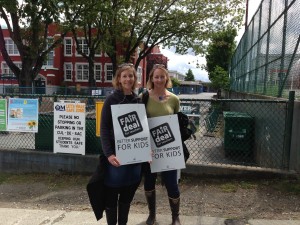 BC teachers picketing at Queen Mary Elementary School, Vancouver
BC teachers picketing at Queen Mary Elementary School, Vancouver
Sign the Petition to support BC teachers / BCTF
BC Premier Christy Clark and Minister Peter Fassbender,
We the undersigned, faculty members, librarians, administrators, students, and staff in post-secondary institutions across British Columbia, encourage you to increase your support of public education by recognizing the value of our teachers. We encourage you to demonstrate this recognition by bargaining with the BCTF with an open mind to meeting the teachers’ very fair proposals. This includes de-escalation by backing down on the BC Public School Employers’ Association’s (BCPSEA) retaliatory lockout, which further erodes the teachers’ right to bargain and threatens fair labour practices across the BC public sector. BCTF President Iker argues “It’s time for Premier Christy Clark to provide the employer with new funding that will help bring the two sides closer together on class size, composition, staffing levels for specialist teachers, and wages.” We agree.
Please invest in education and labour by resolving this dispute at the bargaining table rather than through retaliatory lockouts. The teachers, who are the BCTF, and all public sector employees through their unions, deserve a fair process of reaching a collective agreement. Thank you.
Posted in BC Education, Faculty, Free speech, Government, K-12 issues, Organizing, Protests, Strikes & Labor, Student Movement, Students, Teachers, Unions
Tagged BC education, BCTF, Critical Education, K-12 issues, Students, Teachers, unions
On the #BCed student movement #bcpoli #ubc #yteubc #edstudies
The myth of the infantile and third Person
On 4 June I watched as a small group of students walked out of our local high school in frustration, a quiet stand but not quite a protest. One student muttered “hardly an angry crowd.” Just as candidly, another student posted: “The walk out was shit.” Another used the f-word to emphasize “failure.”
Wisely, the students were counselled by teachers to stay in class. But equally wisely, students encouraged each other to figure out how and when to take a stand as student-activists. Compared with the walkout in support of teachers in March 2012, this did not reflect the students’ ability to organize. It was just a minor test of the system. And unlike the Quebec student movement in early 2013, which drew secondary and post-secondary students together for a shared cause, the BC student movement has yet to materialize or find common ground across levels of education.
One of the problems at this moment is that students are infantilized and familialized, reduced to children caught in the throes of a bad parental relationship. It’s unclear how or why this happened. The @BCWalkout2014 Twitter and “Save our Students” Facebook, which began organizing the walkout at the end of May had a bit to do with it: “The two sides are like parents who are divorcing and have stuck their children in the middle for the last thirteen years,” the appeal to walkout went. “Each side claims to be “fighting for the students” yet each side fails to show how they are doing so.”
On 2 June, major media providers, such as the Vancouver Sun and CTV News repeated and quoted the lines and logic. Student frustrations, CTV News reported, were “built up like emotions in a child caught between two divorcing parents.” I hear teacher educators at UBC repeat the same, seemingly afraid to offend the government by supporting the teachers.
On queue, the day before the 4 June walkout a grade 12 student wrote a letter to The Province:
I am writing to express my discontent on behalf of a vast population of public-school students concerning the current collective bargaining between the B.C. Teachers’ Federation and the provincial government. To say a dysfunctional relationship between two parents doesn’t affect the children would be an outrageous lie. The relationship between the BCTF and the province is very much the same and the effects are mostly felt by the students.
The day after the walkout Carolina Tedula tried to work with the metaphor in the Times Colonist, but concluded that “the teachers and the government are far from being different faces of the same coin:”
With respect to the student walkout, and its comparison of the teacher/ government fight to the fight between two divorcing parents. To me, a more realistic comparison is this: The government is the deadbeat spouse, the teachers are the spouse asserting his/her rights and his/her children’s rights, with full backing of the Supreme Court of B.C.
In the entire history of childhood, those unfortunately experiencing painful break-ups, separations or divorces have never once been able to organize a collective opposition movement. Obviously it is not difficult to comprehend why or why not. Freud did not allow it and daddy or mommy won’t allow it either. So it is impossible for this logic to work to any degree in organizing a student movement. Here, one is infantilized as much as one subscribes to the storyline.
It’s equally impossible to build a movement out of third persons– those that seemingly rise as silent majorities and voices of reason at the point of politics. The myth of the third person is the myth of the Canadian way. These myths have had their day but will never underwrite momentum for a student movement.
At some point soon, a major test of the BC system has to materialize, as there has to be something more to education and life than the promise of a job when youth unemployment rates are increasing toward unprecedented numbers.
Posted in BC Education, Free speech, Government, K-12 issues, Organizing, Protests, Student Movement, Student Speech, Students, Teachers, Unions
Tagged BC education, BCTF, Free speech, Government, K-12 issues, Students, Teachers, unions
#BCED and the politics of education funding #bcpoli #yteubc
Tara Ehrcke, May 28, 2014, RankandFile.ca— Two days into rotating strikes and a “partial” lockout by the BC government, independent polling shows strong support for the teachers. An Angus Reid poll showed that among the general public, 41 percent supported the teachers while 30 percent support the government. Among parents with children in school, the support is stronger, with 51 percent supporting the teachers and only 28 percent support for the government.
The issue has also drawn the attention of BC’s opposition parties – both the NDP and the Greens (who have one sitting MLA). But while neither party supports the current actions of the government, they are also unwilling to take a clear stance supporting the demands of the teachers – in particular, the restoration of class size and class composition limits and a fair salary increase.
The NDP does not have a great track record on this issue. I’ve been following their position in every election since the limits were illegally stripped back in 2002. Not once since 2002 has the NDP come out in support of restoring the limits and reinstating teachers’ collective agreement language. I have personally asked this question in 2005, 2008 and 2013, and never has an NDP candidate I have spoken to committed to restoring the language or the funding.
In the last election, in 2013, the NDP platform included $100 million for education. This is dismally short of the $300 million needed to restore class sizes and additional funding to address increased costs to school boards. But sadly, it is even less than the $178 million they were proposing in 2005.
While the NDP is happy to attack the Liberals for their bargaining tactics, they haven’t made a concrete commitment to do anything different with respect to funding and restoring our contract. In yesterday’s question period, new NDP leader John Horgan chastised Education Minister Peter Fassbender saying, ”a 12-year record of destabilizing public education. A child who started in grade 1 in 2002 has had 12 years of confusion as the result of this government’s policies.”
But never once in that twelve years has the NDP promised to do the right thing. The issue is not “confusion” as he claims, rather the issue is large, complex classes and too few resources.
It sometimes feels that the NDP simply like to use our situation to play partisan politics rather than address the issues. The biggest media story they made of the last court case (when our contract stripping was found illegal for a second time) was the fact that the judge found the government to have provoked a strike. While important, the revelation about the government’s deliberate provocation of the strike pales in comparison to systematically underfunding schools and robbing teacher’s of their constitutional rights.
The Greens have also weighed in on the dispute, with a frustrating opinion piece by interim party leader Adam Olsen and a more thoughtful, if still problematic, blog post from MLA Andrew Weaver. Both refuse to take sides, implicitly suggesting the teachers’ complaints are not justified. Olsen writes, “it appears they have given up on making a real effort to find common ground, and instead focused their efforts on winning a publicity battle that is detrimental to our children and their teachers.”
I wonder if either Olsen or Weaver believe that if someone steals your house, and you get into a feud about it, the right answer is to just split it in half in a compromise?
Party politics aside, teachers are strong on the ground and the mood solid.Teachers are angry about the lockout, in which we do all our work for 90% of our pay. But spirits are high – we’re giving it our 90%!
Tara Ehrcke is bargaining chair and past president of the Greater Victoria Teachers’ Association.
Read More: RankandFile.ca
Posted in BC Education, Budgets & Funding, Disputes, Government, K-12 issues, Organizing, Strikes & Labor, Teachers, Unions
Tagged BC education, BCTF, Government, K-12 issues, Teachers, unions, Working conditions
Class size and composition most important public policy issue in BC teachers dispute
Class size and composition is arguably the single most important public policy issue in the current dispute between BC teachers and government.
The educational and economic implications of class size and composition policies are huge, but in the context of collective bargaining and related court cases public discussion of the costs and benefits of class size reduction has been cut short.
Class size is one of the most rigorously studied issues in education. Educational researchers and economists have produced a vast amount of research and policy studies examining the effects of class size reduction (CSR).
What is the research evidence on CSR?
Since the late 1970s, the empirical evidence shows that students in early grades perform better in small classes and these effects are magnified for low-income and disadvantaged students. Most studies have focused on primary grades, but the relatively small number of studies of later grades also shows positive results of CSR.
Randomized experiments are the “gold standard” in social science research. One such study, known as Project STAR, involved 11,500 students and 1,300 teachers in 79 Tennessee schools produced unequivocal results that CSR significantly increased student achievement in math and reading.
A CSR experiment in Wisconsin illustrated student gains in math, reading, and language arts. In Israel, which has high, but strict maximum class size rules, a rigorous study of CSR produced results nearly identical to Project STAR. Studies in Sweden, Denmark, and Bolivia find similar results.
Do all studies of CSR produce unequivocal positive results? No, but the vast majority of research, including the most rigorous studies, leave no doubt about the positive effects of CSR.
The research evidence on CSR led to class-size caps in California, Texas, Florida, and British Columbia, before the BC government stripped them from the teachers’ contract in 2002.
Why are smaller classes better?
Observational research in reduced size classes finds that students are more highly engaged with what they are learning. That is, students have higher participation rates, spend more time on task, and demonstrate more initiative.
In turn, teachers in smaller classes spend more time on instruction and less time managing misbehavior. They also have more time to reteach lessons when necessary and to adapt their teaching to the individual needs of the students.
One, perhaps counter-intuitive, finding from the research is experienced teachers are better able to capitalize on the advantages of smaller classes than more novice teachers.
How small is small enough?
Project STAR reduced class size from an average of 22 students to 15. Previous research found significant positive effects of CSR at below 20.
Based on these findings some have argued that CSR is not effective unless these levels are attainable. But, the broad pattern of evidence indicates a positive impact of CSR across a range of class sizes.
What about the costs?
There are demonstrable costs involved in reducing class size. As with all public policy questions both benefits and costs must be considered. The potential future costs of not creating smaller classes in public schools also must be taken into account.
Reduced class size boosts not only educational achievement, but has a positive impact on variety of life outcomes after students leave school.
Results from a number of studies show that students assigned to small classes have more positive educational outcomes than their peers in regular-sized classes including rates of high school graduation, post-secondary enrolment and completion, and quality of post-secondary institution attended.
Additionally, students from small classes have lower rates of juvenile criminal behavior and teen pregnancy; and better savings behavior and higher rates of homeownership than peers from regular-size classes.
What are the policy implications of CSR research?
Class size in an important determinant of a broad range of educational and life outcomes, which means policy decisions in this area will have a significant impact on future quality of life in the province.
The money saved today by not reducing class size will be offset by more substantial social and educational costs in the future, making class size reduction the most cost-effective policy.
Sample of CSR Research Articles:
Angrist, J.D., & Lavy, V. (1999). Using Maimonides’ rule to estimate the effect of class size on scholastic achievement. Quarterly Journal of Economics, 114(2), 533-575.
Browning, M., & Heinesen, E. (2007). Class Size, teacher hours and educational attainment. The Scandinavian Journal of Economics, 109(2), 415-438.
Chetty, R., Friedman, J.N., Hilger, N., Saez, E., Schanzenbach, D.W., & Yagan D. (2011). How does your kindergarten classroom affect your earnings? Evidence from Project STAR. Quarterly Journal of Economics, 126(4), 1593-1660.
Dynarski, S., Hyman, J., & Schanzenbach, D.W. (2013). Experimental evidence on the effect of childhood investments on postsecondary attainment and degree completion. Journal of Policy Analysis and Management, 32(4), 692-717.
Finn, J., Gerber, S., & Boyd-Zaharias, J. (2005). Small classes in the early grades, academic achievement, and graduating from high school. Journal of Educational Psychology, 97(2), 214-223.
Fredriksson, P., Öckert, B., & Oosterbeek, H. (2013). Long-term effects of class size. The Quarterly Journal of Economics, 128(1), 249-285.
Krueger, A.B. (1999). Experimental estimates of education production functions. Quarterly Journal of Economics, 115(2), 497-532.
Krueger, A.B., & Whitmore, D. (2001). The effect of attending a small class in the early grades on college test taking and middle school test results: Evidence from Project STAR. Economic Journal, 111, 1-28.
Krueger, A.B., & Whitmore, D. (2002). Would smaller classes help close the black-white achievement gap? In J.Chubb & T. Loveless (Eds.), Bridging the Achievement Gap (pp. 11-46). Washington, DC: Brookings Institution Press.
Molnar, A., Smith, P., Zahorik, J., Palmer, A., Halbach, A., & Ehrle, K. (1999). Evaluating the SAGE program: A pilot program in targeted pupil-teacher reduction in Wisconsin. Educational Evaluation and Policy Analysis, 21(2), 165-77.
Word, E., Johnston, J., Bain, H.P., et al. (1990). Student/Teacher Achievement Ratio (STAR): Tennessee’s K-3 class size study. Final summary report 1985-1990. Nashville: Tennessee State Department of Education.
Urquiola, M. (2006). Identifying class size effects in developing countries: Evidence from rural Bolivia. Review of Economics and Statistics, 88(1), 171-177.
Metaphors We Bargain By: Labor-Management as Marriage
Lakoff and Johnson’s Metaphors We Live By changed forever complacency about the structure of language by showing how deeply rooted metaphors are constitutive of the way we think and act rather than simply flowery poetic forms of language use. These metaphors are deeply embedded and can be simple (up is good) or multi-faceted (love is a journey; argument is war). Metaphors simplify what is complex or new and they are never neutral but communicate values and ideologies, often shifting or diverting attention in their use.
There is no doubt in British Columbian’s minds the BCTF and the BC government do not have a warm fuzzy relationship. Indeed the working relationship between the two has seriously deteriorated over the past 10+ years. The current labor conflict between the British Columbia Teacher Federation (BCTF) and the British Columbia government has politicians, pundits, students, and others saying labor and management is a marriage. The marriage metaphor now crops up to offer ‘a way forward’ in labor-management in BC public education.
Let’s be clear about one thing to start. This metaphor is not meant to be a universal metaphor for labor-management… would anyone think the locked out IKEA workers and IKEA or the teamsters and the Port Authority are married to one another? Not likely. Here are a few illustrations of the marriage metaphor being used to (re)construct labor-management in BC public education. Note that the inclusion of students as off-spring of the BCTF-BCEd marriage is the core idea upon which the metaphor turns.
Like any troubled marriage, it is ultimately the children who are hurt in the bickering and squabbling. But unlike a family breakup, there are 558,985 public school students affected. Divorce is simply not an option. (Andrew Weaver, MLA)
But unlike a constantly quarreling couple that should just split up and go their separate ways, the provincial government and the teachers’ union can’t get a divorce — not now, not ever. The sour marriage desperately needs counselling, especially if we don’t want the relationship to affect the kids, in this case B.C. students. (Bill Tieleman, The Tyee)
To say a dysfunctional relationship between two parents doesn’t affect the children would be an outrageous lie. The relationship between the BCTF and the province is very much the same and the effects are mostly felt by the students. (Jacob Smith, 12th grade student)
The marriage metaphor, as it is used in these cases, draws on a few key ideas: there is a couple (BCTF and BCEd), they have children (all students in BC schools), and the parents have common goals and whatever differences they have in achieving those goals must be sorted out for the sake of the children (students) because divorce is out of the question (hmmm, what kind of marriage is this?), and if needs be counseling (BC Labor Relations Board Relationship Enhancement Program) should be sought to overcome differences between parents.
Does the Marriage Metaphor Work?
Paranthetically, the marriage metaphor at least gives us a respite from the education as market with children/families as consumers metaphor that is even more ubiquitous in discussions of public education.
So BCTF and BCEd as a troubled married couple with children works if the marriage reflects an abusive relationship, where one partner (BCEd) has forced and bent the other (BCTF) to its will. The fact that twice the BC Supreme Court has ruled that the government acted illegally is plenty of evidence of abuse, and the government’s unwillingness to make things right suggests the abuse is ongoing. (So court rulings as a marital counseling strategy don’t appear effective.)
The marriage metaphor may be more tenuous in assuming that both partners share the same goals, in this case doing right by the kids. Let’s assume that this is a common goal, but what each partner means by doing right by the kids may be fundamentally different. For example, one need not be too cynical to suggest BCEd’s doing right by the kids is to encourage individualism, focus on vocational, jobs oriented education, get those kids out on their own as soon as possible and contribute to the economy. And, although maybe a bit generous, BCTF’s doing right by the kids is in creating a more comfy, tenable, child-friendly workplace for themselves which will in turn make for happy children. These are not trivial, just humorous differences.
And the success of the metaphor hinges on the possibility that counseling will not just be helpful, but will be THE means for overcoming differences. In this counseling BCEd will face up to the fact its been abusive and learn new strategies for being a fair and equitable partner. BCTF will learn new and less disruptive strategies for asserting itself (no more strikes!). (We’ve seen already that legal rulings haven’t been an effective couples therapy, and it’s an open question whether the LRB programs would be.) Meanwhile, the kids are alright (well not really, because this metaphor silences students and strips their agency, in and out of school). I’m no expert on marital counseling, but I’m thinking this remedy has limited potential for success; optimistically, maybe 50-50 for a kiss and make-up and ‘moving forward.’
The labor-management as marriage metaphor diverts attention from fundamental and healthy conflict over the purposes and interests served by public education. The current BC neo-liberal oriented government interests are not the same interests of the poor and working class, First Nations communities, rural and inner city communities, education workers, many parents.
Other Metaphors to Ponder
How ever we think about public education and the relationship between the BCTF and BCEd we will be thinking metaphorically. It’s important for us to use our metaphors wisely and mine them for understanding and taking action. Maybe the marriage metaphor has some traction in finding ‘a way forward’, although I doubt it. Perhaps we should be finding ‘our way home’ or ‘destroying the system’ or ‘moving on,’ but those are metaphors for another day.
Now that we are on to the power of metaphor, let’s think about Labor-Management as…
- war
- argument
- ladder
- contest
- duel
Over to you.
Posted in BC Education, Disputes, Strikes & Labor, Unions

 Follow
Follow

